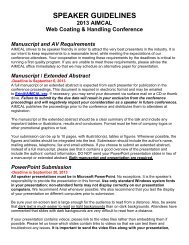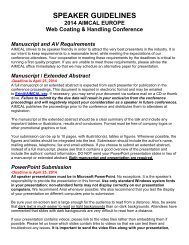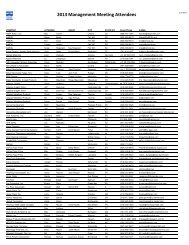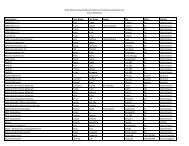Coating - Aimcal
Coating - Aimcal
Coating - Aimcal
You also want an ePaper? Increase the reach of your titles
YUMPU automatically turns print PDFs into web optimized ePapers that Google loves.
Flexible Packaging<br />
Between 2005 and 2011, the global converted flexiblepackaging<br />
market has grown by over one-third — from<br />
US$49 billion to US$68 billion — during which time the<br />
balance of production and demand has been inexorably<br />
shifting away from Europe and north America in favor of<br />
the Asia-Pacific region. In 2005, the north American and<br />
European markets together accounted for approaching<br />
60 percent of the global total, but by 2011 this share was<br />
barely 50 percent while Asia’s share has grown to over 40<br />
percent. As Asia’s position has grown, it has become both<br />
a threat and an opportunity to traditional supply chains.<br />
Over the next five years, PCI forecasts that the global<br />
market will grow by at least a further 25 percent to over<br />
US$85 billion by 2016, as it responds positively to global<br />
packaged-food trends and the inevitable drive toward<br />
sustainability in food packaging.<br />
While growth has been most dramatic in the Asia-Pacific<br />
region, flexible-packaging markets in other regions also<br />
have seen significant gains, especially in the Middle<br />
East, Africa and Central and South America. A number<br />
of leading flexible-packaging converters, including<br />
Amcor, Bemis and Sealed Air have recognized these<br />
opportunities and have expanded their manufacturing<br />
presence, helping to transform these markets.<br />
Consolidation in the converting industry — at both the<br />
regional and global level — has been evident in recent<br />
years, and more is expected over the next five years.<br />
Much of it will involve the large global players and privateequity<br />
firms such as Sun Capital. Running counter to<br />
this consolidation activity is the emergence of a growing<br />
number of smaller regional producers that have been able<br />
to carve out important positions as lower-cost and shortrun<br />
suppliers to both the major brand owners and smaller<br />
food packers.<br />
As with all industries, flexible-packaging producers have<br />
been keen to address environmental issues. They have<br />
helped reduce packaging-waste volumes by replacing<br />
glass bottles, blown and injection-molded containers,<br />
aluminium and tinplate cans and paperboard packages<br />
with lighter-weight flexible alternatives. In some cases,<br />
this has also meant that packaged-goods companies are<br />
able to reduce their carbon footprint. As a result of these<br />
changes, one of the fastest growing flexible-packaging<br />
formats is the stand-up pouch, which is being used in<br />
many applications as a highly cost-effective and attractive<br />
alternative to rigid formats.<br />
The growth in barrier packaging to reduce food waste in<br />
distribution is another trend that is expected to continue<br />
to drive added-value flexible packaging. Demand for high<br />
oxygen- and moisture-barrier metallized laminates and<br />
complex oxygen barrier coextrusions is already strong,<br />
but new cost-effective technologies are being developed<br />
and are likely to extend this sector further.<br />
Finally, the emergence of biodegradable and compostable<br />
materials as potential alternatives to petroleum-based<br />
polymer substrates has been vigorously promoted<br />
as an environmentally-acceptable route to handle all<br />
the problems of packaging-waste disposal; however,<br />
higher raw-material costs and the lack of suitable barrier<br />
properties of biodegradable and compostable materials<br />
means that so far they have made little impact. Most in<br />
the market believe, however, that environmental and<br />
legislative pressures will ultimately see the development<br />
of competitively priced non-oil-based alternatives, for the<br />
benefit of all. n<br />
By Paul Gaster, Pci Films consulting, Ltd., +44-1604-<br />
749001, email: p.gaster@pcifilms.com, www.pcifilms.com<br />
www.aimcal.org | 95<br />
Executive Summaries • A Look Ahead











